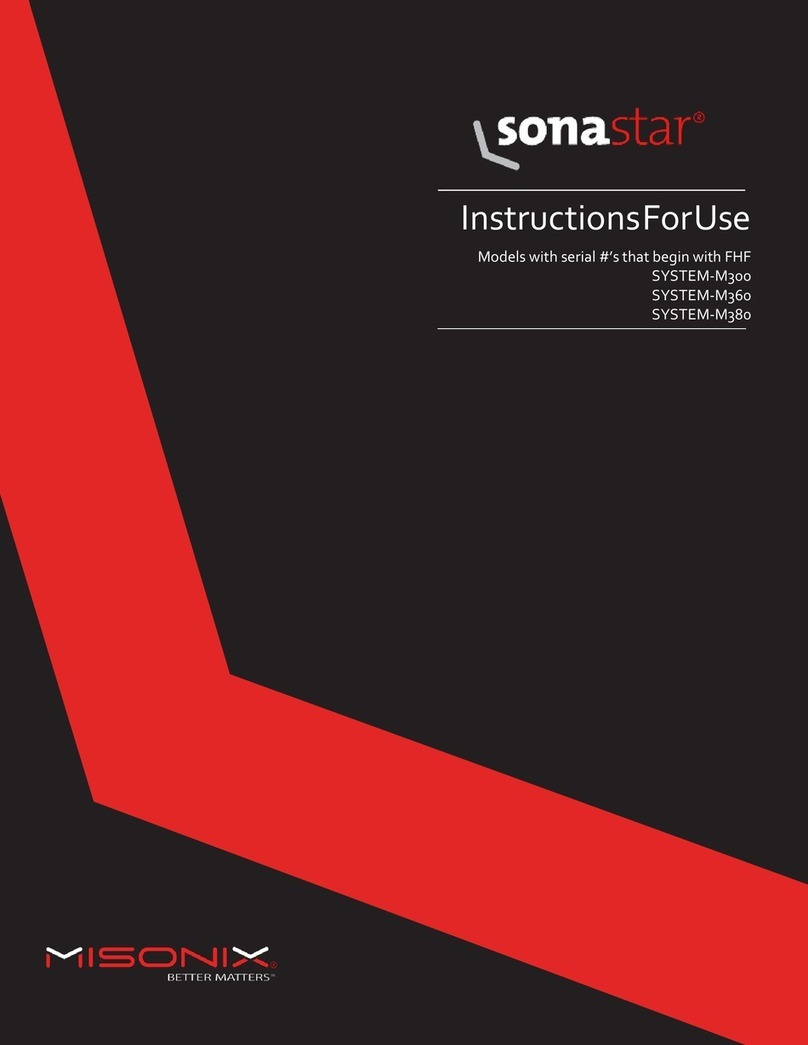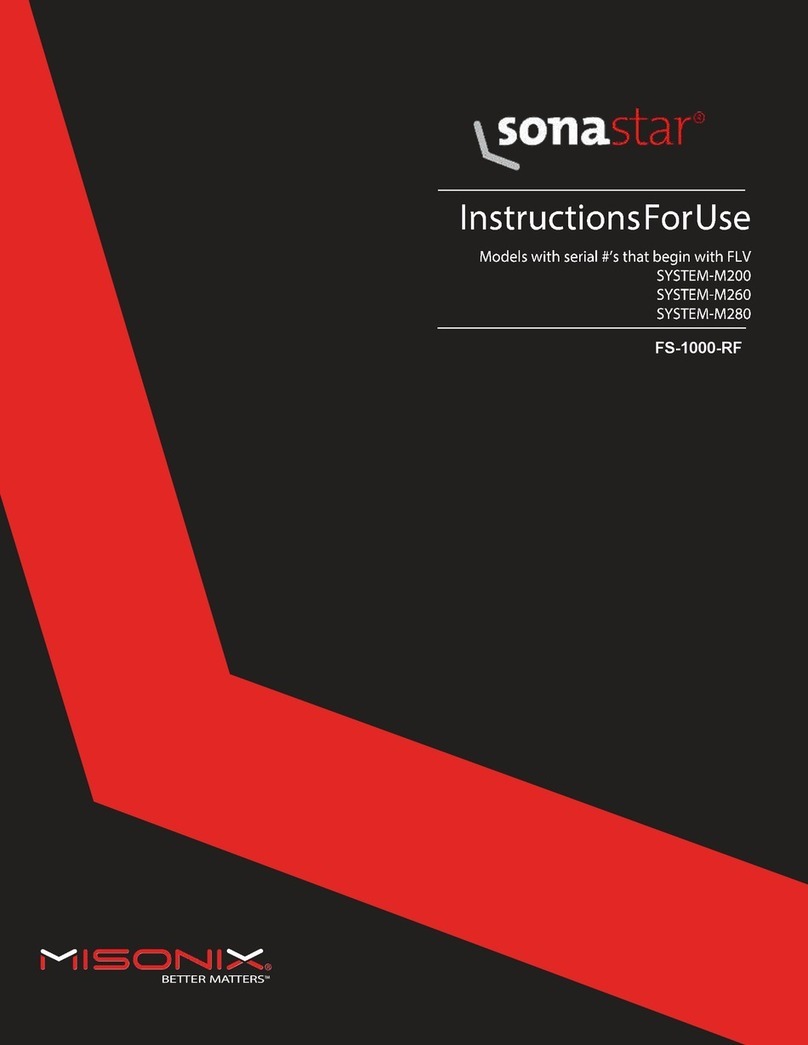
Instructions For Use –neXus Ultrasonic Surgical Aspirator
Doc #: 100-10-1000 rev A p 3
Table of Contents
1.
General Safety Statements .............................................................................................................................................................. 4
1.1.
EMC Statement ...................................................................................................................................................................... 4
1.2.
Electrical Safety Statement ....................................................................................................................................................9
1.3.
Environmental Statement......................................................................................................................................................9
1.4.
Summary of Safety Notices..................................................................................................................................................10
1.5.
Explanation ofSymbols
...................................................................................................................................................... 15
2.
Indications and Contraindications
............................................................................................................................................... 18
2.1.
Indications for Use ............................................................................................................................................................... 18
2.2.
Intended Use Environment..................................................................................................................................................19
2.3.
Contraindications.................................................................................................................................................................19
3.
Adverse Effects ..............................................................................................................................................................................19
4.
Considerations During ClinicalUse
..............................................................................................................................................20
4.1. Hard Tissue Applications/Use (e.g. BoneScalpel Applications)...............................................................................................20
4.2. Wound Debridement Applications / Use (e.g. SonicOne applications) ..................................................................................22
4.3 Soft Tissue Applications / Use (e.g. SonaStar Applications).................................................................................................22
5.
System Overview
..........................................................................................................................................................................23
5.1.
Principle of Operation.......................................................................................................................................................... 23
5.2.
Reusable, Non-Sterile Components..................................................................................................................................... 23
5.3.
Single Use, SterileComponents
.........................................................................................................................................23
6.
Console Setup and Use
................................................................................................................................................................ 24
6.1.
Installation ........................................................................................................................................................................... 24
6.2.
Initial Setup.......................................................................................................................................................................... 25
6.3
Power Up and Setup ............................................................................................................................................................26
6.4 Tubing Connection ...................................................................................................................................................................28
6.5 Handpiece Assembly & Disassembly.......................................................................................................................................30
6.6
Priming Irrigation Tubing .....................................................................................................................................................31
6.7
Main Screen with a Standard Handpiece (e.g. BoneScalpel or SonicOne)...........................................................................32
6.8
Main Screen with a Sonastar Handpiece (e.g. SonaStar Short or SonaStar Long) ............................................................... 34
6.9
Mode Selection & Functionality........................................................................................................................................... 36
6.10
System Check .......................................................................................................................................................................36
6.11
Footswitch Connectivity & Functionality .............................................................................................................................37
6.12
Powering Down the Console................................................................................................................................................ 40
7.
Cleaning Console
..........................................................................................................................................................................41
7.1 Console & Footswitch Cleaning
.............................................................................................................................................41
7.2 Single-Use Item Disposal
.......................................................................................................................................................41
8.
Faults, Indicators & Troubleshooting
..........................................................................................................................................42
8.1 Electrical Faults
.......................................................................................................................................................................43
8.2 Mechanical Faults
...................................................................................................................................................................44
8.3 Power Supply Faults
...............................................................................................................................................................45
8.4 Communication Faults
........................................................................................................................................................... 45
8.5 Temperature Faults
................................................................................................................................................................46
8.6 Footswitch Faults
...................................................................................................................................................................46
8.7 Handpiece Faults
.................................................................................................................................................................... 47
8.8 Aspiration Troubleshooting
...................................................................................................................................................48
8.9 Irrigation Troubleshooting
.....................................................................................................................................................48
9.
Specifications
................................................................................................................................................................................ 50
10.
Service, Repair andTechnical Correspondence
..........................................................................................................................51





























